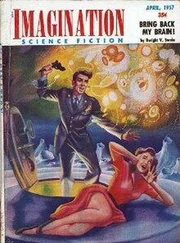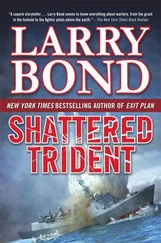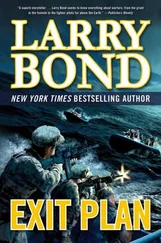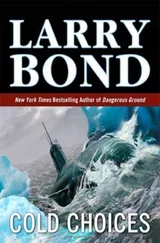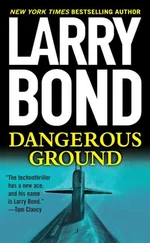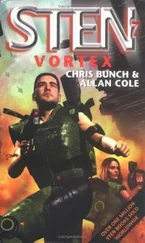“Each gun emplacement is completely roofed over, Comrade General, and open only in back and in front. The
Boers knew we could only attack from the northeast, so the opening in front is limited to that arc.”
Vega nodded his understanding. Thus concealed and protected the G-5 was a powerful antitank weapon. Used as an indirect fire weapon, it could fire a high-explosive shell forty kilometers. Used in a direct fire mode, it far outranged the 115mm cannon mounted on his tanks.
Vasquez walked forward far enough to lay a proprietary hand on the G-5’s monstrous barrel.
“As you suspected, Comrade General, the Boers were short on ammunition. They wanted to make every shell count. But these guns aren’t normally rigged for antitank work, so they have separate projectiles and charges.” He inclined his head toward the sandbag-covered magazines visible behind each gun position.
“That makes them fire more slowly than ours. And even a one fifty-five millimeter shell will not stop one of our tanks every time.”
Often enough, though, Vega thought moodily, surveying a field crowded with wrecked T-72s and BTR-60s. Still, the Afrikaner decision to use their G-5s as antitank weapons explained the lack of artillery fire during his approach march. It also indicated a growing sense of desperation. No commander used towed artillery that way unless he had no other option.
Abruptly, he turned toward Suarez.
“What are our casualties?”
The colonel consulted his leather-bound notebook.
“We lost twenty-eight vehicles-ten of which can be repaired.” He cleared his throat.
“Plus about a hundred and fifty men killed, with another two hundred seriously wounded. We believe enemy casualties were very heavy, almost twice ours.
“
Vega sighed. He’d won another victory, and at what Havana would call a reasonable cost. But any price was high when he was this poor in resources. He looked south, wondering if the American Marines fighting their way inland from Durban were faring any better.
CHAPTER 35
Bloody Ridge, Bloody Forest
DECEMBER 25-MOBILE HEADQUARTERS, ALLIED
EXPEDITIONARY FORCE, NEAR THE OCEAN TERMINAL, DURBAN
Trailed by a small security detachment of fully armed U.S. Marines, Lt.
Gen. Jerry Craig made his way through the wreckage littering Durban’s waterfront. What he saw was not making him happy. A freshening sea breeze had blown the stench of cordite and sun-bloated corpses inland, but all the clean salt air in the world couldn’t hide the damage inflicted by days of bitter fighting and deliberate sabotage.
Out in the harbor, oil-coated waves lapped gently against the rusting superstructures of ships sunk to block the main channel. Other burnt-out hulks sagged against the docks themselves, entangled in the torn and twisted skeletons of fallen cargo-handling cranes. Mounds of fire-blackened rubble from bomb-and shell-shattered buildings choked off the spiderweb of streets and rail lines spreading out from the port into
Durban proper.
Bulldozer engines, chain saws, and acetylene torches
?”
roared, howled, and hissed as the nine hundred men of Craig’s Marine combat engineer battalion tried frantically to clear paths through the debris. But the sheer volume of work remaining seemed to make a mockery of all their efforts. Although Diederichs’s garrison troops had failed to hold the city, their stubborn defense had left it a smoking ruin.
Two days after all significant Afrikaner resistance had collapsed, South
Africa’s largest deepwater harbor remained closed to Allied shipping. And until its docks and access roads could be reopened, Craig’s British and
American forces would remain dependent on whatever supplies and equipment could be brought in over the beach or by air. Most of his main battle tanks and self-propelled guns were still parked offshore-crowding the decks and cargo spaces of fast transports waiting impatiently at anchor.
Craig frowned. A few heavy vehicles had been ferried in one at a time by the U.S. Navy’s overworked air-cushion landing craft. Not enough to make an appreciable battlefield contribution, just enough to impose even more strain on a supply system already laboring to provide the fuel, ammunition, and food the expeditionary force needed.
All of which left the advance inland toward Pretoria in the hands of a few infantry battalions backed by light armor, artillery, and carrier-based air power. He quickened his pace, skirting a trio of bomb craters pock marking the quay side road. His men were pushing forward as fast as they could, but every hour’s delay in opening the harbor gave Vorster that much more time to rush additional troops into the Drakensberg Mountains-a rugged band of steep mountains and forested ridges separating Natal’s lowlands from the open grasslands of the high veld
The chubby, straw-haired lieutenant colonel commanding his combat engineers saw Craig coming and hurried over.
“Sir.” He saluted wearily. Sweat stains under his arms and dark rings under his eyes showed that he’d been working side by side with his men for nearly forty-eight hours straight.
“Colonel. ” Craig casually returned his salute and gestured at the mess visible on all sides.
“I need your best guess, Jim. How much longer before we can start off-loading here?”
The younger man stared at the controlled chaos along the waterfront as though seeing it all for the very first time. Three days. Maybe four.”
His shoulders slumped.
“My boys are pretty near the edge, General. Some of ‘em are so tired they’re starting to walk right into booby traps a five year-old could’ve spotted.”
Craig nodded. He’d watched the casualty reports climb steadily. In the two days since Durban had officially been 11 pacified,” the engineer battalion had lost more than ten men killed, with another forty or so seriously wounded. Snipers, explosive booby traps, and fatigue-related accidents were eroding the effectiveness of a unit he was sure to need later.
He raised his voice as a bulldozer rumbled by, shoving a burned-out car away from the road.
“We’re bringing in some help from the Cape. Sort of a Christmas present. The One oh one’s putting its engineers on C-141 s right now. Air Force says they’ll be here by the end of the day. “
It took several seconds to sink in. Then the lieutenant colonel nodded gratefully. The Army air assault division’s combat engineers wouldn’t have their equipment with them, but they could be used to spell his own men. Even without bringing in extra gear, doubling the number of skilled people working might cut up to twenty-four hours from the time needed to clear the port.
The battalion commander saluted a second time, this time with more vigor and enthusiasm. The news that he’d be getting reinforcements seemed to have stripped years off his age.
“We’ll get these goddamned docks open
ASAP, General. You can take that to the bank.”
“I already have, Jim. I already have. Now you get some rest yourself when those Army pukes show up, you hear me?” Craig patted the other man on the shoulder.
“I need a smart, tough engineer in charge of this operation-not a walking zombie. “
“Yes, sir.
Craig turned away, already moving back to his waiting helicopter. He’d come to the waterfront himself to show the colonel and his men just how important their efforts were to the whole expeditionary force-not to try micro managing every last detail of their work. In his book, you found the right man for the job, gave him the tools he needed, and then got the hell out of his way.
As he neared the camouflaged UH-60 Blackhawk serving as his command transport, an aide hurried overbent low to clear the helicopter’s still-turning rotor.
Читать дальше


